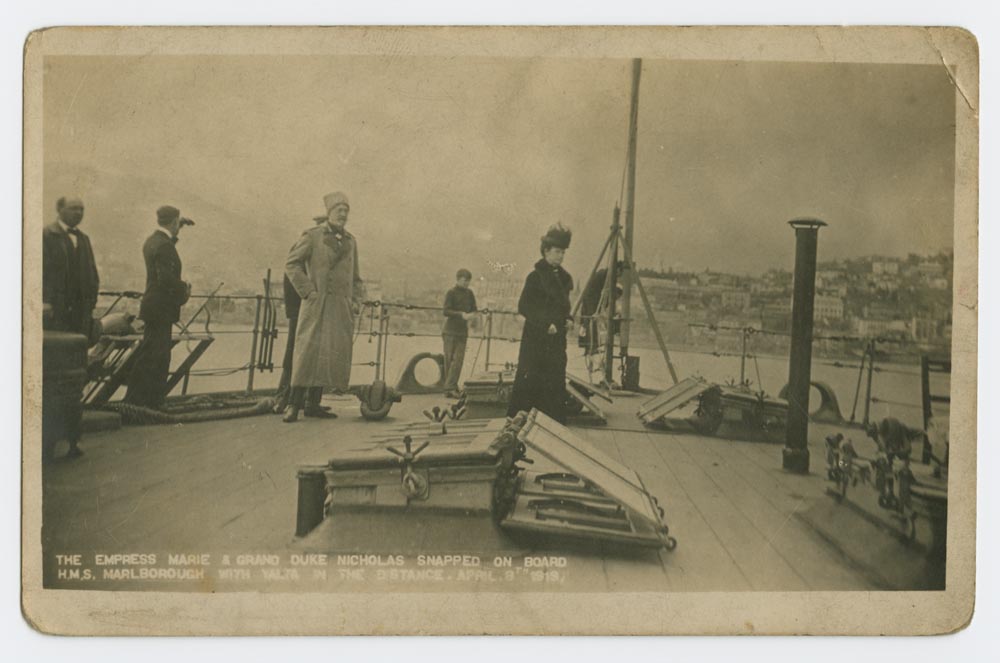Coryne Hall is a historian and broadcaster specialising in Imperial Russia and European royalty, her books include Little Mother: A Biography of the Empress Marie Feodorovna, 1847-1928 and Once a Grand Duchess: Xenia, Sister of Nicholas II. We spoke to her about her latest book, To Free the Romanovs: Royal Kinship and Betrayal in Europe, 1917-1919, to discover how Britain’s George V left the Imperial family high and dry, and the pivotal role she played in laying an empress to rest.
The British royal family were placed in an awkward position by the Romanov requests for help, who was it deemed politically acceptable for Great Britain to assist and who was deemed unacceptable?
It was unfortunately not considered acceptable to offer asylum to the Tsar or any male members of the Russian Imperial family. The British government needed to keep Russia in the war as allies and did not want to upset the Provisional government, who they had already recognised as the legitimate rulers of Russia. The Petrograd Soviet and other extremists were against any members of the Imperial family going abroad, as this might give them access to funds to stage a counter revolution.
In early 1919, at the request of his mother Queen Alexandra, who was the sister of the Dowager Empress Marie Feodorovna, George V did rescue members of the Imperial family who were stranded in the Crimea. The only members of the Imperial family who were permitted to come to England were the Dowager Empress, her daughter Xenia and some of Xenia’s sons (but only because, as the British government said, the boys ‘did not possess Grand Ducal rank or title’). They were allowed to come to England (with a fairly low-key welcome) on what was described as a ‘family visit.’
At the end of 1918 Grand Duke Dmitri Pavlovich, the Tsar’s cousin, slipped into England with a British diplomatic mission from Tehran. He was not made very welcome, and nor was his sister Marie who soon joined him. Both left fairly quickly to live in Paris.

What was life like for those of the Romanov family who settled in Britain? How many stayed close to the British royal family and how long did their use of royal apartments last?
It was only Grand Duchess Xenia and some of her sons who remained in England for any length of time. The Dowager Empress left for her native Denmark in the summer of 1919.
Xenia was George V’s favourite cousin and he gave her Frogmore Cottage as a grace and favour home in 1925. She used to go up to Windsor castle to see the King and Queen, and King George helped her with various difficulties.
However, after he died in January 1936, Edward VIII said he wanted Frogmore as a sanctuary for the royal family and, reluctantly, Xenia had to leave. She was offered Wilderness House, Hampton Court, and moved there in March1937, remaining until she died in 1960.
Most of the other exiled Romanovs settled abroad. They were not wanted in Britain.
Of the other European monarchies on the throne in 1917, which came the closest to providing support to the Tsar’s immediate family?
Although he could do nothing to help the Tsar, King Christian X of Denmark (Nicholas’s cousin) and his ambassador Harald Scavenius did the most to help members of the extended Romanov family. They constantly lobbied for the release of the Dowager Empress and her family, as well as better conditions for them. They also tried to negotiate the release of the four Grand Dukes held in the SS Peter & Paul Fortress in 1918. Unfortunately, just as a ransom was being negotiated the Danish Government recalled Harald Scavenius under pressure from France. The four Grand Dukes were shot in January 1919.
Queen Marie of Romania (another of the Tsar’s cousins) tried to get her relatives out of Russia at the end of 1918. Although the Dowager Empress turned down her offer of help, Queen Marie did manage to help a few members of the family.
In the autumn of 1918 King Alfonso XIII of Spain tried to negotiate asylum for Empress Alexandra and her daughters, who it was widely believed at the time were still alive and being held by the Bolsheviks. He was all ready to receive them in Spain, and then it became apparent that they had died with the Tsar.

Which of that generation of Russian exiles have you found the most fascinating, and which do you keep coming back to?
The Dowager Empress Marie Feodorovna, and Grand Duchess Xenia and her family.
The dramatic life of the Empress Marie has fascinated me for years and resulted in me writing the first real biography of her in English (“Little Mother of Russia. A Biography of the Empress Marie Feodorovna 1847-1928.” Shepherd-Walwyn, 1999). She had to watch while everything she loved – her family, the church, her adopted country – was destroyed before her eyes. She certainly lived one of the most dramatic lives of anyone to occupy the Russian throne.
Xenia’s sons were brought up expecting a certain standard of life, and then they found they had to go out and earn their own living in a different world. Some had more success than others! I knew several of Xenia’s grandsons, who helped a lot when John Van der Kiste and I were writing “Once a Grand Duchess” (Sutton Publishing, 2002). I loved hearing the stories they were able to tell about their grandmother and other members of the family.
You’ve dealt with a lot of primary sources during your research, some of which I’d imagine, hasn’t left the family until you gained access: what have you learned that’s genuinely taken you by surprise?
The attitude of King George V and the British government towards all the Grand Dukes, not just the Tsar. They were definitely not wanted in this country. When Grand Duke Dmitri arrived at the end of 1918, he was asked by the Foreign Office to leave Britain. He refused to go unless ordered to by the King. Later, at an awkward meeting at Buckingham Palace, King George told him “you are here only by accident.”
Could you tell us about the role you played in the reburial of the Dowager Empress, Maria Feodorovna?
The Dowager Empress Marie Feodorovna died in Denmark in 1928 and was buried with members of the Danish royal family in Roskilde Cathedral. In “Little Mother of Russia” I stated that her wish was to be buried beside her husband Alexander III in St Petersburg “when circumstances permitted.”
I was later contacted by Prince Nicholas Romanov, at that time head of the Romanov Family Association, who asked me where this information came from. I was able to tell him that it was from the churchwarden at Roskilde Cathedral, whose father, also churchwarden, had been told this personally by the Empress. Prince Nicholas approached Queen Margrethe of Denmark, who then approached President Putin to arrange the reburial.
In September 2006 the Empress Marie’s remains were moved from Roskilde Cathedral and taken to the SS Peter & Paul Cathedral in St Petersburg. My husband and I were invited by the Danish Court to the service in Roskilde Cathedral, and by the Russian Government to the burial service in SS Peter & Paul Cathedral.
It was an extremely moving moment for me as I felt I had fulfilled the Empress’s last wish.
To Free the Romanovs: Royal Kinship and Betrayal in Europe, 1917-1919, the latest book by Coryne Hall, is out now from Amberley. For a fresh look at pivotal moments in history, subscribe to All About History from as little as £13.
